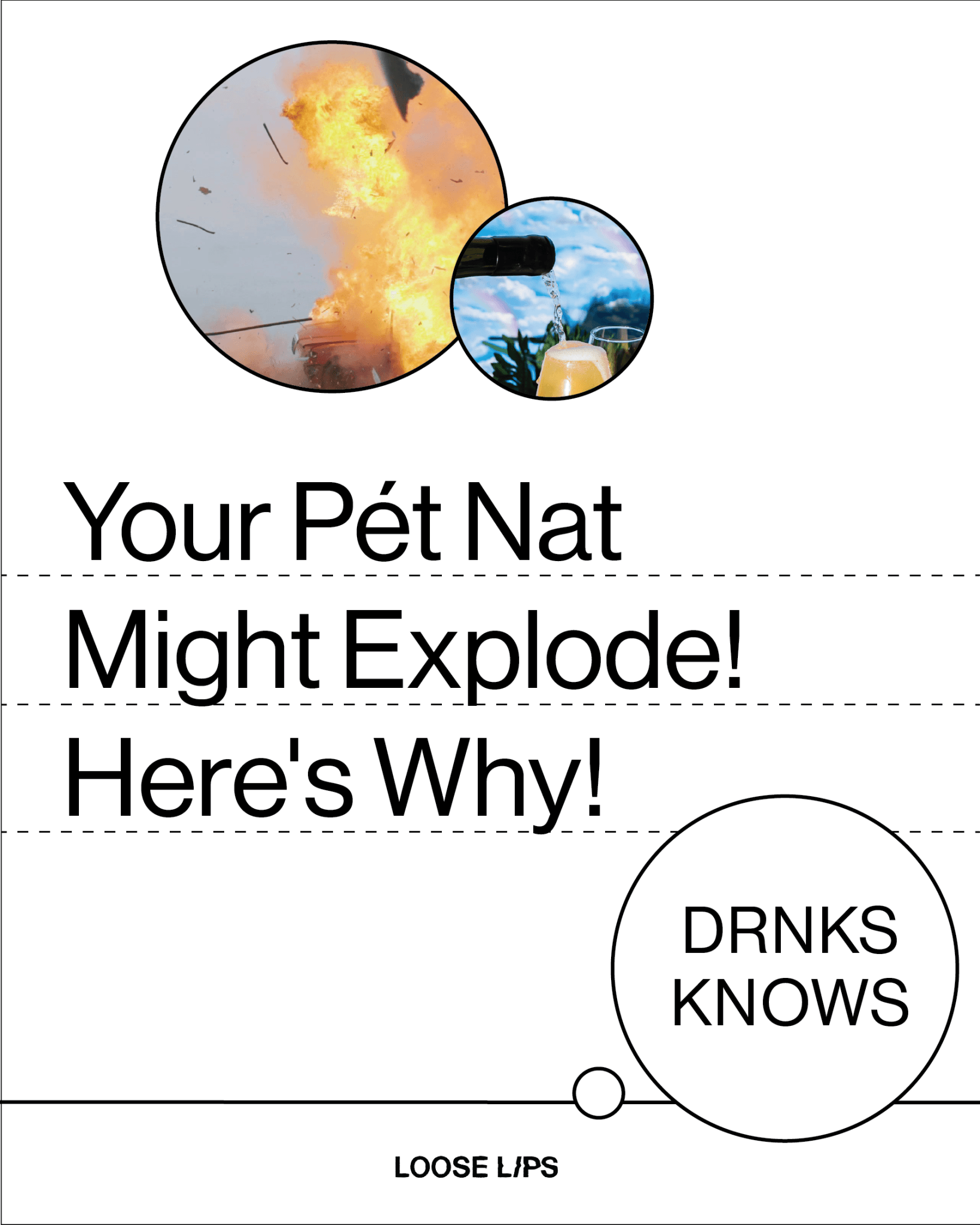
💥 Your Pét Nat Might Explode!

Explosive pét nat. Not a super cool thing, but when a few of you guys bought Kindeli’s Primavera recently, it happened. All over the kitchen! In the cupboards! Yikes. Let us explain.
Anyway, we pinged Kindeli’s Alex Craighead to ask him what’s up with this. He gave us lots of detailed and scientific answers, and Joel (DRNKS Founder, CFO, CEO, COO, Social Media Manager, Intern, 2IC, 3IC) has kindly deciphered those for us, right here, right now.

DRNKS: Alex, howyadoing, and how do you make wine fizzy in the first place?
Short Answer: Good thanks, mate. Sugar! Pét nat has two ferments, and true pét nat is made in the style called ancestral (read: old), where we bottle during the first one, leaving the residual sugar and sediment behind in the bottle, without adding further sugar. But sometimes there’s some extra sugar left if we slightly get the bottling time slightly off, and so they’ll be a bit more fizzy than expected. No less delicious though.
Actual Alex Answer: Wine is made fizzy by leaving residual sugar in the wine prior to bottling. Proper ancestral is bottled during the primary ferment – it can be difficult to make sure you are bottling at exactly the right moment and if bottling is slow the first bottles will be much fizzier than the last. Some people will freeze the base grape juice for addition later on so they have a more accurate idea of the sugar levels going to bottle. This is technically still pét nat, but can’t really be referred to as ancestral, because it’s a secondary ferment.
DRNKS: Can wine be too fizzy?
Short Joel Answer: Yes! If it explodes! The more residual sugar = more bubbles = more pressure in the bottle = the higher the chance of blow outs. With more normy, non pét nat sparkling wines, this sediment is taken out of the bottle in a process called disgorging. With pét nat we skip this bit to get the wine to you that much faster, and because it’s a more “natural” process. Not too much fiddling.
Actual Alex Answer: Yes! Typically pét nat will sit between 2 and 3 bars of pressure at 20 degrees Celsius, bottled with 8-15g/L of residual grape sugars (not added sugar). Sometimes this gets exceeded for one reason or another and the pressure and fizz is much higher. The fact that a lot of pét nat is still pretty turbid and crudely or not at all disgorged leads to further agitation of the wine and explosiveness. Methode Traditional wines are often bottled with 32g/L of dosing liquor, but as they are really well riddled and disgorged, the solids aren't there to cause additional issues.
DRNKS: If the wine is so explosive when I open it, why doesn’t the glass explode beforehand?
Short Joel Answer: Actually, Alex’s answer is pretty good here lol.
Actual Alex Answer: Different bottles have different tolerable pressure ranges, but generally the bottles can take extreme pressures (not to say that you can explode them – but more likely they will blow the cap before they break the glass).
DRNKS: So… Got any tips for opening wild pét nats?
Short Joel Answer: Chill it down. Open the cap slowly, ditch the flair! Do it outside! Be ready to catch the precious exploding liquid in a mouth, glass or jug.
Actual Alex Answer: Get the wine as cold as possible (CO2 is much more soluble at lower temperatures – so it will stay dissolved in the wine as opposed to as in gaseous state). ALWAYS crack the lid a bit to see what you’re dealing with. Stay close to a sink or outside and have glasses available. There are also some more creative solutions such as opening through an upturned zip lock bag in a jug – that way you’ll never lose a drop!